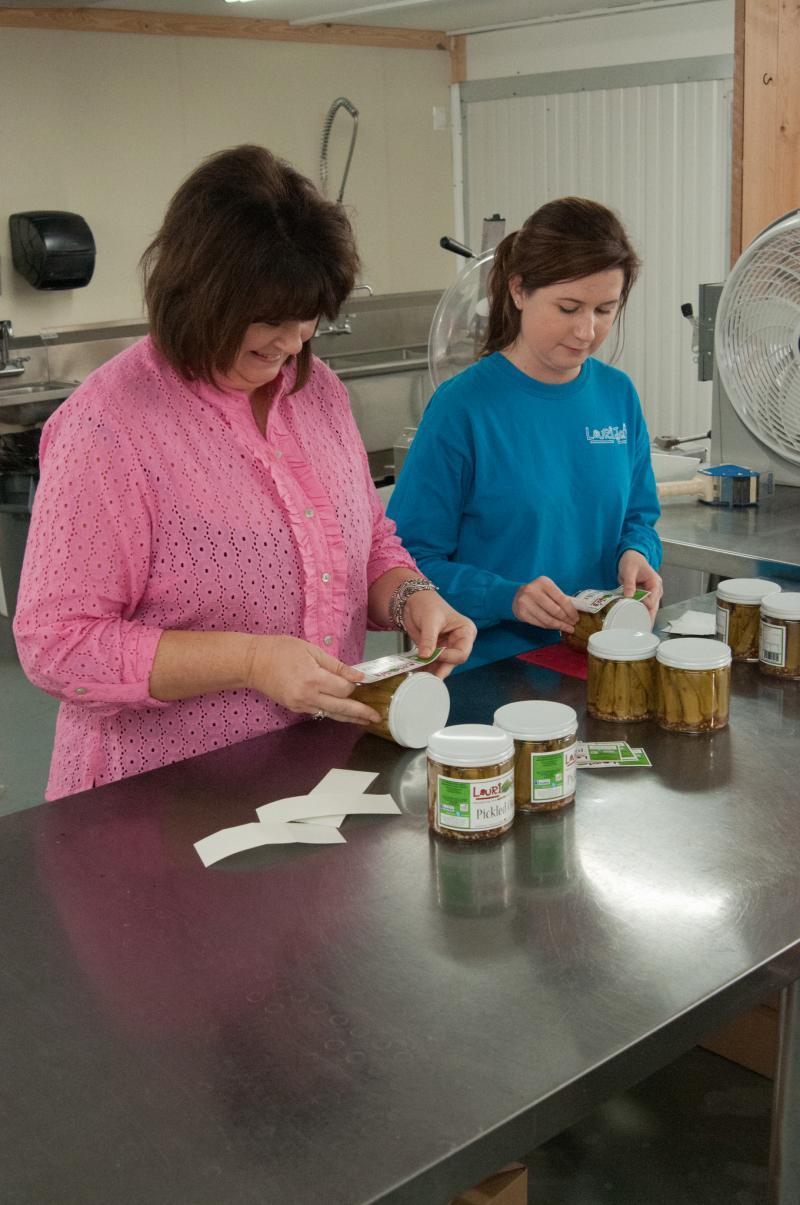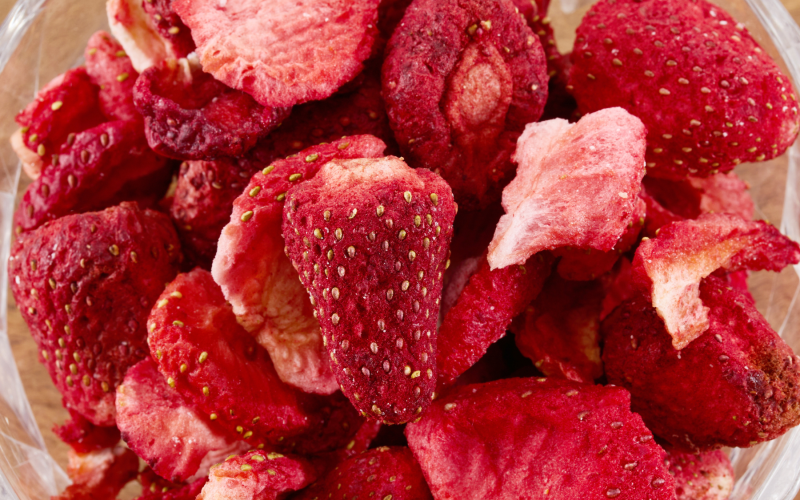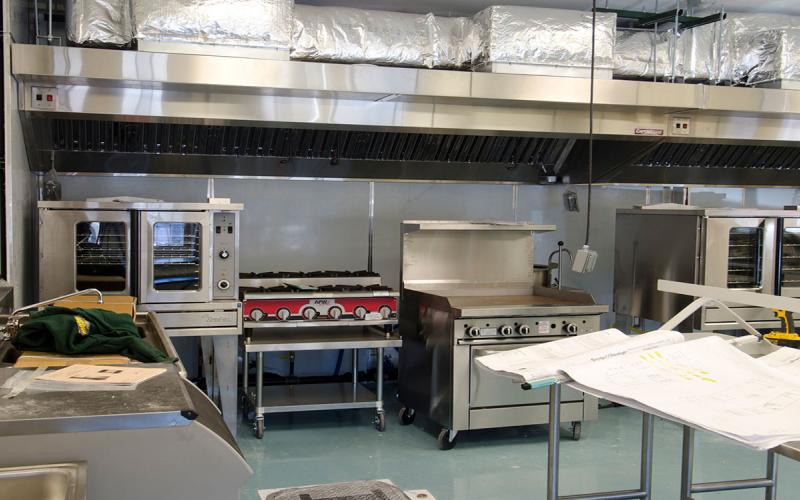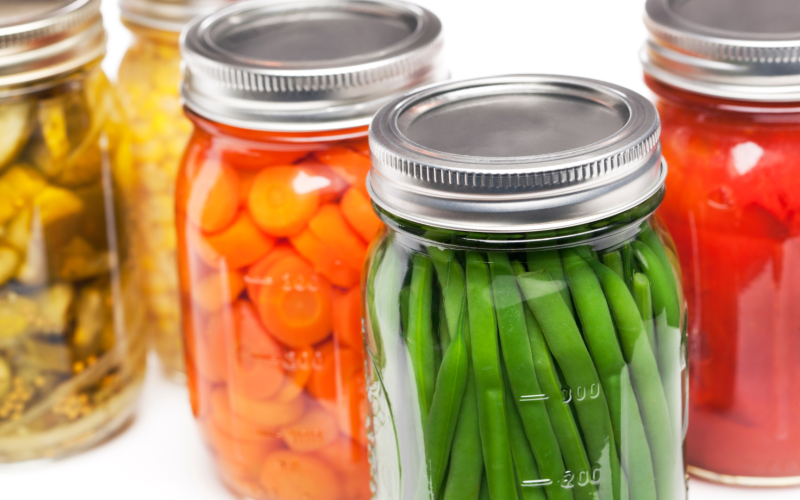It’s an exciting time to be a food processor in the state of South Dakota. Now more than ever, we are seeing food processors and entrepreneurs bringing products, not only to farmers markets, but also to retail stores as well. With this in mind, it can be difficult to navigate through how to bring food products to retail that are not only in regulatory compliance but are also safe. This article is meant to provide regulatory guidance and outline the necessary steps required that must be met to allow for the sale of foods to in different selling venues, which include selling under the cottage food law, to retail stores, and selling interstate or wholesale.
Food Safety and Evaluation of Products

There are several hurdle techniques that can be utilized to reduce, eliminate, or control pathogens in food. These techniques can include controlling the amount of water in the product, controlling the pH, adding preservatives, controlling the atmosphere, or using time and temperature to inactivate pathogens. It is important to understand which hurdle is being utilized and whether that hurdle is sufficient to control, eliminate, or reduce pathogens in the product. Below is a brief explanation of these hurdle techniques.
Water Activity
Water activity is the partial vapor pressure of water in a substance divided by the standard state partial vapor pressure of water. This is frequently used as an indicator of pathogen growth in food. Although water activity can help predict things, such as bacterial growth in food and spoilage caused by yeast and mold, it cannot be used to as a means to inactivate or destroy pathogens. Table 1 shows how different organisms respond to differing water activity levels.
Pathogens
The temperature, pH, water activity, atmosphere, presence of preservatives, food matrix, and much more can play a role in how a pathogen can survive and grow in any given food matrix. Table 1 is an illustration of the many factors that go into evaluating the growth and survival of pathogens in food. SDSU Extension and the South Dakota Department of Health (SD DOH) use such information about pathogens to help determine the food safety of products.
pH
pH is a scale used to determine the acidity or basicity of a product or solution on a scale of 1 to 14. Acidic solutions will have a higher concentration of H+ ions and will have a lower pH. Basic solutions will have a higher concentration of OH- and will have a higher pH. pH can be a very effective way to control the growth of pathogens in food. In some instances, such a low pH can actually create not only a bacteriostatic environment, or no growth, it can also create a bactericidal environment, or bacterial death. However, pH cannot always be considered a means to kill pathogens. Table 1 shows how different organisms respond to differing pH levels.
Time and Temperature
Time and temperature are also a hurdle technology to control, reduce, or eliminate pathogens to an acceptable level. The time and temperature needed to inactivate an organism can vary from food to food. Other characteristics can affect the time and temperature needed to inactivate an organism. For example, an organism with lower water activity may be more thermally resistant than if that same organism is in a product that has high water activity. Water activity, pH, the starting bio burden (initial micro load) can all impact the time and temperature necessary to inactivate pathogens. For this reason, it is important not to assume a time and temperature for a given product will apply to another product even if it is fairly similar.
| Organism |
(°C) |
|
|
water phase salt |
||||||
|---|---|---|---|---|---|---|---|---|---|---|
|
|
|
|
|
|
|
|
|
|
|
|
| Bacillus cereus |
(4) |
(30-40) |
(55) |
|
|
|
|
|
|
|
| Campylobacter |
(32) |
(42-43) |
(45) |
|
|
|
|
|
|
|
| Clostridium botulinum Proteolytic ABF |
(10) |
(35-40) |
(48) |
|
|
|
|
|
|
|
| Clostridium botulinum Non-proteolytic BEF |
(3.3) |
(28-30) |
(45) |
|
|
|
|
|
|
|
| Clostridium perfringens |
(10) |
(43-47) |
(50) |
|
|
|
|
|
|
|
| Enterohemorrhagic Escherichia coli (EHEC) |
(6.5) |
(35-40) |
(49.4) |
|
|
|
|
|
|
|
| L. monocytogenes |
(-0.4) |
(37) |
(45) |
|
|
|
|
|
|
|
| Salmonella |
(5.2) |
(35-43) |
(46.2) |
|
|
|
|
|
|
|
| Shigella |
(6.1) |
|
(47.1) |
|
|
|
|
|
|
|
| Staph. Aureus growth (aerobic) |
(7) |
(37) |
(50) |
|
|
|
(0.90) |
|
|
|
| Staph. Aureus toxin (aerobic) |
(10) |
(40-45) |
(48) |
|
|
|
|
|
|
|
| Streptococcus group A |
(10) |
(37) |
(<45) |
|
|
|
|
|
|
|
| Vibrio spp. |
(5) |
(37) |
(45.3) |
|
|
|
|
|
|
|
| Yersiniz enterocolitica |
(-1.3) |
(25-37) |
(42) |
|
|
|
|
|
|
|
From FDA 2011. Fish and Fishery Products Hazards and Controls Guidance. 4th Edition and International Commission on Microbiological Specifications for Foods. 1996. Microorganisms in Foods 5: Microbiological Specifications of Food Pathogens. Blackie Academic and Professional, New York.
Regulatory Requirements
The South Dakota Department of Health oversees and regulates the cottage food law as well as foods sold to retail in South Dakota. Depending on the food type and where the food is sold, the food may also be overseen and regulated by the Animal Industry Board (AIB), the South Dakota Department of Agriculture, the USDA/FSIS, or FDA. Any business making a food product in South Dakota and selling across South Dakota borders is engaging in interstate commerce and would be subject to complying with FDA regulations.
The information below is intended to be used as guidance and is focused on food sales that pertain to selling under the cottage food law, to retail in South Dakota, and interstate. It may not cover every specific scenario or food product.
Acidified and Fermented Foods
- Examples:
- Canned pickles, relish, salsa, sauerkraut, fruit sauce, BBQ sauce, hot sauce
- South Dakota Cottage Food Sales:
- These products must be reviewed and approved by a Processing Authority or the processor can take the State approved online Cottage Food law course and sell under the cottage food law.
- SDSU Extension Acid and Acidified Canned Good Resource
- South Dakota Retail Sales:
- These products must be reviewed and approved by a processing authority and need to be processed out of a licensed kitchen and the processor must receive a food service license from the SD DOH.
- SDSU Extension Acid and Acidified Canned Good Resource
- Wholesale and Interstate Sales:
- Regulated by the FDA.
- FDA Interstate Commerce Resource
Alcoholic Beverages
- South Dakota Cottage Food Sales:
- The South Dakota Dept of Revenue oversees alcohol licensing requirements. License must be obtained through the South Dakota Dept of Revenue.
- SD DOR Alcohol Resource
- South Dakota Retail Sales:
- The South Dakota Dept of Revenue oversees alcohol licensing requirements. License must be obtained through the South Dakota Dept of Revenue.
- SD DOR Alcohol Resource
- Wholesale and Interstate Sales:
- Regulated by the Bureau of Alcohol, Tobacco, Firearms, and Explosives
- ATF Alcohol Resources
Cottage Foods (in general)
- South Dakota Cottage Food Sales:
- Please see a summary of the cottage food laws provided by SDSU Extension
- SDSU Extension Cottage Food Law Resource
- South Dakota Retail Sales:
- Not applicable
- Wholesale and Interstate Sales:
- Not Applicable
Beef Tallow/Lard/Suet
- South Dakota Cottage Food Sales:
- Any products that contain greater than 3% meat or 30% fat that will be used for human consumption are amenable to the Federal Meat Inspection Act. Therefore, the processors would be required to have a retail meat license from the AIB if they are selling the products through their retail counter and an inspected meat license and the required food safety programs such as HACCP plans, sanitation standard operating procedures (SSOPs), sampling programs and other pertinent perquisite programs before these products could be labeled with the mark of inspection and be sold wholesale. If the product is produced under inspection, it could be sold from a residence, farmers market, or roadside stand.
- South Dakota Retail Sales:
- Any products that contain greater than 3% meat or 30% fat that will be used for human consumption are amenable to the Federal Meat Inspection Act. Therefore, the processors would be required to have a retail meat license from the AIB if they are selling the products through their retail counter and an inspected meat license and the required food safety programs such as HACCP plans, sanitation standard operating procedures (SSOPs), sampling programs and other pertinent perquisite programs before these products could be labeled with the mark of inspection and be sold wholesale.
- Wholesale and Interstate Sales:
- Any products that contain greater than 3% meat or 30% fat that will be used for human consumption are amenable to the Federal Meat Inspection Act. Therefore, the processors would be required to process out of an FSIS inspected facility.
Dairy
- Note: Interstate sales of raw milk are prohibited by the FDA.
- South Dakota Cottage Food Sales:
- To sell either Grade A or Grade B milk products, the processor must process out of a facility that is in compliance with the Pasteurized Milk Ordinance (PMO).
- The sale of raw milk is permitted at the place or farm where the milk is produced and the milk may be delivered directly to the consumer by the producer. A permit and license must be acquired through the SD DANR.
- SDSU Extension Dairy Resource
- Raw Milk Codified Law
- SD DANR Raw Milk Educational Guide
- South Dakota Retail Sales:
- To sell either Grade A or Grade B milk products, the processor must process out of a facility that is in compliance with the Pasteurized Milk Ordinance (PMO).
- SDSU Extension Dairy Resource
- Wholesale and Interstate Sales:
- To sell either Grade A or Grade B milk products, the processor must process out of a facility that is in compliance with the Pasteurized Milk Ordinance (PMO).
- SDSU Extension Dairy Resource
Eggs
- South Dakota Cottage Food Sales:
- Selling eggs requires obtaining an egg Dealer License and an egg Candling/Grader License which is obtained through the SD DANR.
- SDSU Extension Egg Resource
- SD Dept of Ag Egg Resource
- South Dakota Retail Sales:
- Selling eggs requires obtaining an egg Dealer License and an egg Candling/Grader License which is obtained through the SD DANR.
- SDSU Extension Egg Resource
- SD Dept of Ag Egg Resource
- Wholesale and Interstate Sales:
- Must comply with the Eggs Product Inspection Act.
- CFR Inspection of Eggs Regulations
Fish
- South Dakota Cottage Food Sales:
- Selling fish in South Dakota requires commercial harvesting and processing inspections. There are GFP restrictions on the type of fish that can be sold as well as fishing hatchery requirements.
- SDSU Extension Fish Resource
- South Dakota Retail Sales:
- Selling fish in South Dakota requires commercial harvesting and processing inspections. There are GFP restrictions on the type of fish that can be sold as well as fishing hatchery requirements.
- SDSU Extension Fish Resource
- Wholesale and Interstate Sales:
- See FDA resource for Fish and Fishery Products
- FDA Fish and Fishery Products Resource
Flavored honey, flavored maple syrup
- South Dakota Cottage Food Sales:
- No license is required to produce maple syrup in South Dakota. However, to sell maple syrup at a Farmers Market, the maple syrup must be tested for water activity or pH depending on the formulation/recipe of the product.
- SDSU Extension Maple Syrup Resource
- South Dakota Retail Sales:
- The maple syrup must be tested for water activity or pH depending on the formulation/recipe of the product.
- These products must be processed out of a licensed kitchen and the processor must receive a food service license from the SD DOH.
- Wholesale and Interstate Sales:
- Regulated by the FDA.
- FDA Interstate Commerce Resource
Flavored Soda Drinks
- South Dakota Cottage Food Sales:
- For flavored soda drinks that are prepared without bottling, this would be allowed to be sold at the Farmers Market without licensing.
- For flavored soda drinks that are prepared and are bottled, this would require licensing by the South Dakota Department of Health given the C. botulinum risk.
- South Dakota Retail Sales:
- For flavored soda drinks that are prepared and are bottled, this would require licensing by the South Dakota Department of Health given the C. botulinum risk.
Jam, jelly, or fruit syrup
- South Dakota Cottage Food Sales:
- These products must be reviewed and approved by a Processing Authority or the processor can take the State approved online Cottage Food law course and sell under the cottage food law.
- SDSU Extension Acid and Acidified Canned Good Resource
- South Dakota Retail Sales:
- These products must be reviewed and approved by a Processing Authority and need to be processed out of a licensed kitchen and the processor must receive a food service license from the SD DOH.
- SDSU Extension Acid and Acidified Canned Good Resource
- Wholesale and Interstate Sales:
- Regulated by the FDA.
- FDA Interstate Commerce Resource
Juice
- South Dakota Cottage Food Sales:
- Juice must meet all the requirements set forth in Juice HACCP and must be approved by the SD DOH.
- SDSU Extension Juice Resource
- South Dakota Retail Sales:
- Juice must meet all the requirements set forth in Juice HACCP and must be approved by the SD DOH.
- SDSU Extension Juice Resource
- Wholesale and Interstate Sales:
- Juice must meet all the requirements set forth in Juice HACCP and is regulated by the FDA.
- SDSU Extension Juice Resource
- FDA Juice HACCP Regulation
Meat
- South Dakota Cottage Food Sales:
- Meat products must be stored and processed at a state inspected facility that is under the South Dakota Meat Inspection (SDMI) program or at a facility under the authority of USDA FSIS.
- SDSU Extension Meat Resource
- SD Animal Industry Board Guidance
- South Dakota Retail Sales:
- Meat products must be stored and processed at a state inspected facility that is under the South Dakota Meat Inspection (SDMI) program or at a facility under the authority of USDA FSIS.
- SDSU Extension Meat Resource
- SD Animal Industry Board Guidance
- Wholesale and Interstate Sales:
- Meat products must be stored and processed at a state inspected facility that is under the authority of USDA FSIS
- SDSU Extension Meat Resource
Naturally Fermented Food
- Examples:
- Sauerkraut, Kimchi, Kombucha
- South Dakota Cottage Food Sales:
- The processor needs to take the State approved online Cottage Food law course and maintain a temperature <41 F° to sell under the cottage food law.
- SDSU Extension Produce Resource
- South Dakota Retail Sales:
- This product needs to be processed out of a licensed kitchen. and the processor must receive a food service license from the SD DOH.
- Wholesale and Interstate Sales:
- Regulated by the FDA.
- FDA Interstate Commerce Resource
Non-Temperature Goods and Baked Goods
- Examples:
- Nuts: almonds, walnuts, etc.
- Grains: wheat, corn, rice, etc.
- Seeds: sunflower seeds, sesame seeds, chia seeds, coffee seeds
- Dry Mixes: spice/seasoning mix, baking mix, powder drink mix, granola mix, home ground flour (wheat flour, corn flour)
- Baked Goods: cookies, rolls, cakes, muffins, breads, lefsa
- Candy: confectionaries, hard candy
- Pasta: Fettuccine, Alfredo
- South Dakota Cottage Food Sales:
- Allowed to be sold under the cottage food laws without licensing. Must adhere to cottage food laws 34-18-35, 34-18-37, and 34-18-38
- SDSU Extension Cottage Food Law Resource
- South Dakota Retail Sales:
- These products must be processed out of a licensed kitchen and the processor must receive a food service license from the SD DOH.
- Wholesale and Interstate Sales:
- Regulated by the FDA.
- FDA Interstate Commerce Resource
Nut Butters
- Examples:
- peanuts butter, almond butter, etc.
- South Dakota Cottage Food Sales:
- This product requires SD DOH licensing.
- South Dakota Retail Sales:
- This product requires SD DOH licensing.
- Wholesale and Interstate Sales:
- Regulated by the FDA.
- FDA Interstate Commerce Resource
Nuts
- Examples:
- Peanuts, almonds, cashews, etc.
- South Dakota Cottage Food Sales:
- This product requires SD DOH licensing.
- South Dakota Retail Sales:
- This product requires SD DOH licensing.
- Wholesale and Interstate Sales:
- Regulated by the FDA.
- FDA Interstate Commerce Resource
Pet Treats
- South Dakota Cottage Food Sales:
- Pet treats made in South Dakota require additional licensing through the SD DANR.
- SD DANR Pet Food Resource
- South Dakota Retail Sales:
- Pet treats made in South Dakota require additional licensing through the SD DANR.
- SD DANR Pet Food Resource
- Wholesale and Interstate Sales:
- See FDA resource for Pet Foods.
- FDA Resource Regulation for Pet Food
Plain Honey
- South Dakota Cottage Food Sales:
- State law SDCL 38-18 requires that all apiaries must be registered with the SD Dept of Ag. The vendor must be in compliance with all Apiary laws set forth by the SD Dept of Ag. The honey must be produced by bees kept by the vendor.
- SD DANR Resource
- South Dakota Retail Sales:
- State law SDCL 38-18 requires that all apiaries must be registered with the SD Dept of Ag. The vendor must be in compliance with all Apiary laws set forth by the SD Dept of Ag. The honey must be produced by bees kept by the vendor.
- SD DANR Resource
- Wholesale and Interstate Sales:
- Regulated by the FDA.
- FDA Interstate Commerce Resource
Plain Maple Syrup
- South Dakota Cottage Food Sales:
- No license is required to produce maple syrup in South Dakota. However, to sell maple syrup at a Farmers Market, the maple syrup must be tested for water activity.
- SDSU Extension Maple Syrup Resource
- South Dakota Retail Sales:
- The maple syrup must be tested for water activity or pH depending on the formulation/recipe of the product.
- These products must be processed out of a licensed kitchen and the processor must receive a food service license from the SD DOH.
- Wholesale and Interstate Sales:
- Regulated by the FDA.
- FDA Interstate Commerce Resource
Poultry
- South Dakota Cottage Food Sales:
- Poultry is not covered under the cottage food law. Producers selling their own processed birds at a farmers market must comply with exemptions of the Poultry Products Inspections Act (PPIA).
- SDSU Poultry Resource
- South Dakota Retail Sales:
- All poultry products must be processed at a facility under the authority of USDA FSIS.
- SD Animal Industry Board Guidance
- Wholesale and Interstate Sales:
- All poultry products must be processed at a facility under the authority of USDA FSIS.
- SD Animal Industry Board Guidance
Processed Produce
- Examples:
- Vegetables, Fruit
- South Dakota Cottage Food Sales:
- The processor needs to take the State approved online Cottage Food law course and maintain a temperature <0 F° to sell under the cottage food law.
- SDSU Extension Produce Resource
- South Dakota Retail Sales:
- These products must be processed out of a licensed kitchen and the processor must receive a food service license from the SD DOH.
- SDSU Extension Produce Resource
- Wholesale and Interstate Sales:
- Regulated by the FDA.
- FDA Interstate Commerce Resource
Temperature-Controlled Baked Goods
- Examples:
- Cheesecake, crème-filled pies
- South Dakota Cottage Food Sales:
- Allowed to be sold under the cottage food laws without licensing but must take the State approved online Cottage Food law course and sell under the cottage food law.
- Must also adhere to cottage food laws 34-18-37 and be sold at a temperature <41 F°
- SDSU Extension Cottage Food Law Resource
- South Dakota Retail Sales:
- These products must be processed out of a licensed kitchen and the processor must receive a food service license from the SD DOH.
- Wholesale and Interstate Sales:
- Regulated by the FDA.
- FDA Interstate Commerce Resource
Sprouts
- South Dakota Cottage Food Sales:
- This product requires approved HACCP and SD DOH licensing.
- South Dakota Retail Sales:
- This product requires approved HACCP and SD DOH licensing.
- Wholesale and Interstate Sales:
- Regulated by the FDA.
- FDA Interstate Commerce Resource
Whole and Intact Produce
- Examples:
- Fruits, vegetables, herbs, etc.
- South Dakota Cottage Food Sales:
- No license is required to sell at the Farmers Market when the produce is whole and intact. Produce processed beyond normal harvesting would be considered processed and not whole and intact.
- SDSU Extension Produce Resource
- South Dakota Retail Sales:
- These products must be processed out of a licensed kitchen and the processor must receive a food service license from the SD DOH.
- Wholesale and Interstate Sales:
- Regulated by the FDA.
- FDA Interstate Commerce Resource
General Guidance
- FDA Registration: Foods sold across state borders may require special registration with the FDA. Please see U. S. Food and Drug Administration Food Facility Registration for more information about your specific product.
- South Dakota Licensing Questions: Licensing questions for the state of South Dakota can be directed to the SD DOH at 605-773-4945.
- Animal Industry Board: Questions around animal and animal-based products can be directed to AIB at 605-773 or aibmail@state.sd.us
- Dairy Products: Questions around dairy and dairy based products can be directed to the SD DANR at 605-688-6455.
- FDA Food Facility Registration: U.S. Food and Drug Administration Food Facility Registration.


